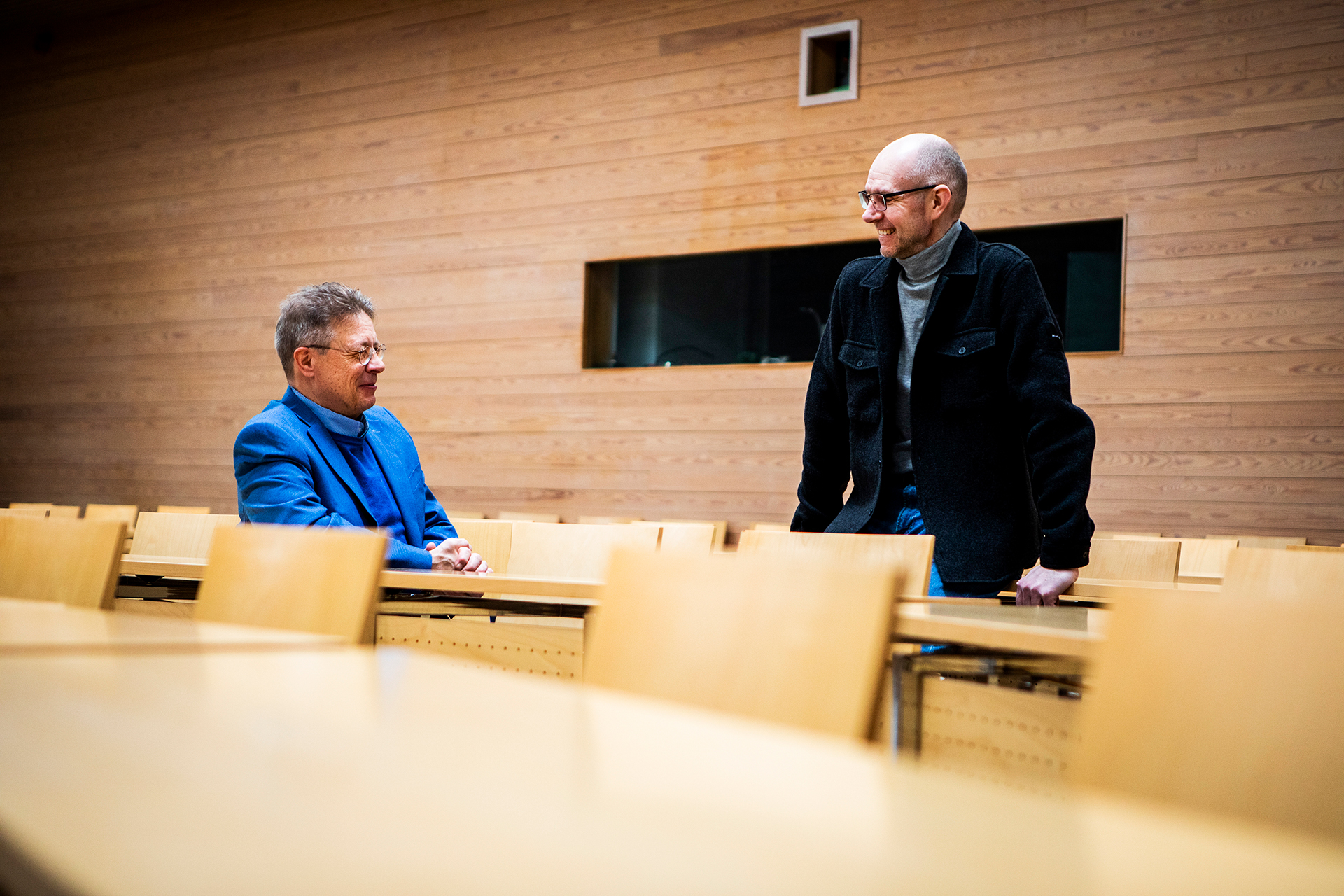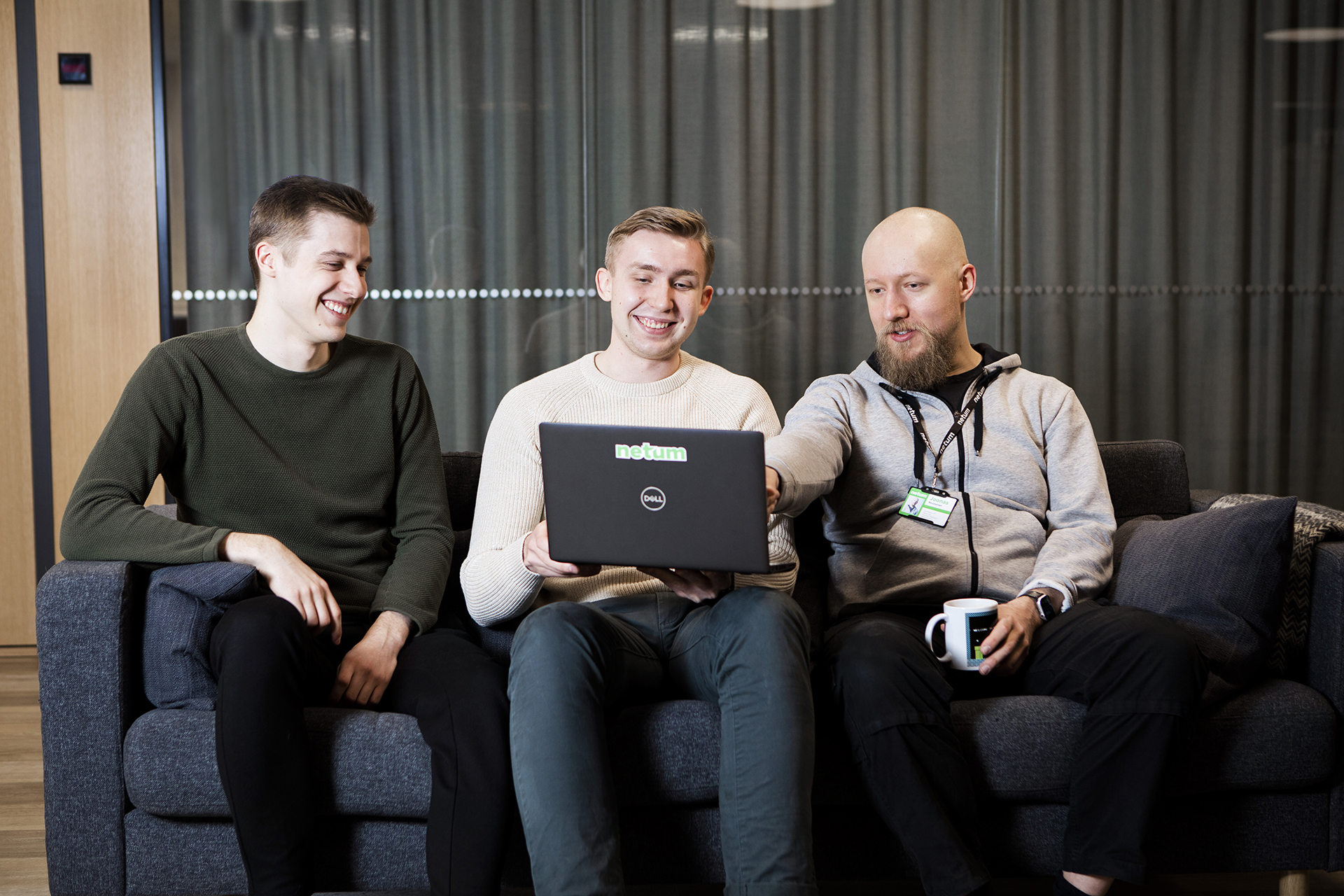 “Netum was flexible and had a great attitude about the cooperation,” says Information Officer Joni Nisula from the joint parishes of Helsinki (pictured on the right). Netum’s Account Manager Ted Varila directed the project and confirms that the great attitude and team spirit were crucial in achieving successful results.
“Netum was flexible and had a great attitude about the cooperation,” says Information Officer Joni Nisula from the joint parishes of Helsinki (pictured on the right). Netum’s Account Manager Ted Varila directed the project and confirms that the great attitude and team spirit were crucial in achieving successful results.
Netum developed a digital logistics system to ease the work
The joint parishes in the Helsinki Metropolitan Area needed to digitalise their previously manual procedures due to upcoming legislation. Netum developed logistics system for tracking the location of the deceased that meets the needs of future legislation. The user-oriented system also makes the everyday tasks of the parish workers easier as the up-to-date location information is now only a few clicks away.
The joint parishes of Helsinki, Espoo and Vantaa carry out thousands of burials each year, and the parish always needs to have up-to-date information on the mortuary location of the deceased. The previous manual system for tracking the deceased was used for decades but had now become obsolete. Finding out the up-to-date location of the deceased was difficult and, at its worst, the workers needed to go to the mortuary personally to check the location. Netum’s system makes it easy and quick to find out the current location and location history of the deceased.
Agile development and great planning ensures a user-oriented result
Netum’s team used agile development for the project. Agile development means dividing the project into smaller parts that are implemented one at a time in two-week cycles, also known as sprints.
– Carrying out the work in smaller pieces instead of a huge project gave us the opportunity to constantly test the system, ensure that we fully understood the customer’s needs and, if necessary, make changes quickly, says Netum’s Account Manager Ted Varila who runs the logistics systems team.
The interface design and component specifications were prepared during the first sprints, and the rest of the sprints consisted of development.
– In the sprints, we focused on completing any unfinished tasks, setting up the production environment and testing its production preparedness. The thorough planning and specification work made it much easier to implement the interface, says Software Engineer Kalle Kankaanpää from Netum.
Agile development helps stick to the schedule and budget
There was a precise budget and schedule for the development of the death logistics system. Netum was able to stick to both as the sprints were planned in detail and the project was implemented in an iterating manner.
– As the schedule was strict, the planning phase was particularly important. We were able to clearly outline a package that matched the customer’s needs and could be implemented within the framework of the schedule and the budget, says Netum’s Integration Specialist Rasmus Haavisto.
Sticking to the budget was good news to Information Officer Joni Nisula from the joint parishes of Helsinki who is in charge of information system development projects and who was closely involved in the development of the death logistics system.
– In the end, the interface prototype included a lot of functionalities that turned out to be unnecessary for our needs. Netum was flexible and had a great attitude about providing what was genuinely necessary without any wasted work, says Nisula.
A user-oriented system makes daily work easier
The previously implemented interface prototype served as a great starting point for designing the system and understanding the necessary functionalities. The development of the system was carried out in three distinct phases: planning, specification, and interface.
One of the features making users’ work easier in the new system is that it can be used on a computer and on a smartphone. Because of this, users can scan QR codes anywhere, for example.
– We made a progressive web application compatible with Android and iOS. It functions like a smartphone app in the browser, says Netum’s Senior Software Developer Joonas Nousiainen who was in charge of directing the technical part of the project.
– The QR code was an important new feature for us. The QR code is printed from the system onto a sticker that is attached to the card on the coffin. It helps us to easily find the deceased person’s information in the system and verify the identity of the person, says Nisula.

Netum’s project team included Integration Specialist Rasmus Haavisto (left), Software Engineer Kalle Kankaanpää (centre) and Senior Software Developer Joonas Nousiainen. According to them, agile development increased the interaction between the team members and the customer, making the planning and development work easier.
The shared database meets the requirements of future legislation
The development of the digital system was made faster by upcoming changes in legislation that place stricter requirements for parishes on tracking the deceased.
The logistics system is used by anyone in the joint parishes of the Helsinki Metropolitan Area whose work involves moving the deceased from one facility to another, such as cemetery and burial service workers. There are about one hundred internal users.
– The logistics system acts as a shared database where users can view and edit the location data of the deceased. It also helps us to have an up-to-date understanding of our remaining capacity for storing bodies. Moreover, the system makes it easier to compile reports for the management, says Nisula.
The use of the system will be expanded to operators outside the church in the future to ensure that comprehensive data from the funeral home and external transport of the deceased can be included in the tracking data. The estimated number of future external users is about 300.
Technologies used in the project:
- The server function of the app was implemented with NodeJS on an Azure environment
- React was used for the interface
- Cypress was used for interface testing
- Microsoft SQL Server was used for database management.
Are you in need of a new system or the development of an existing system? We provide digital services from concept to implementation and administration.